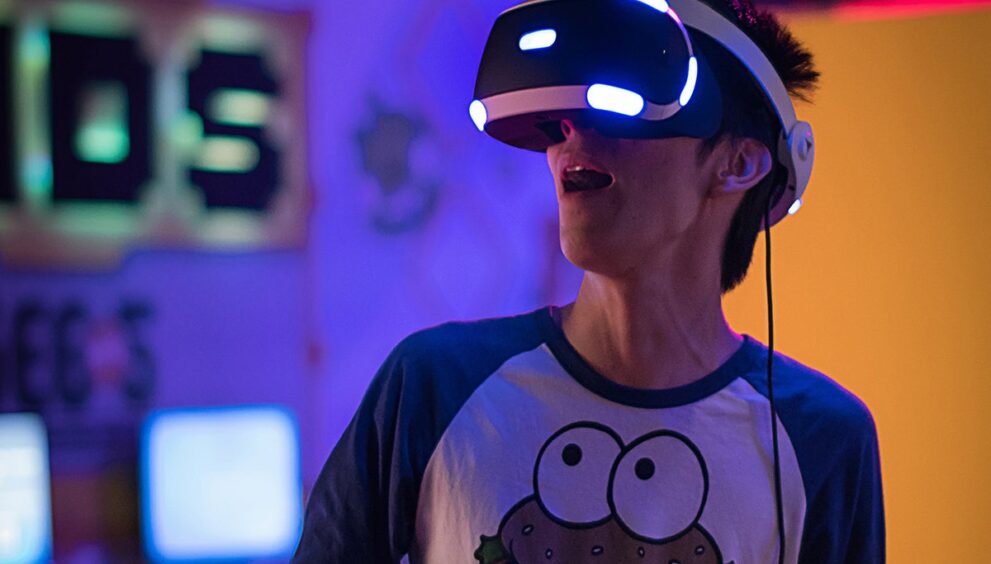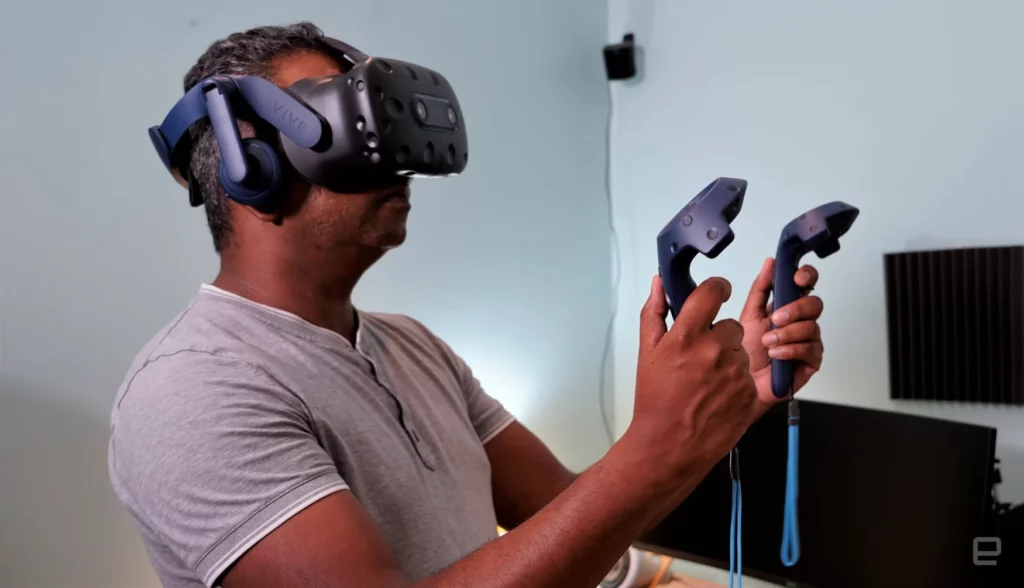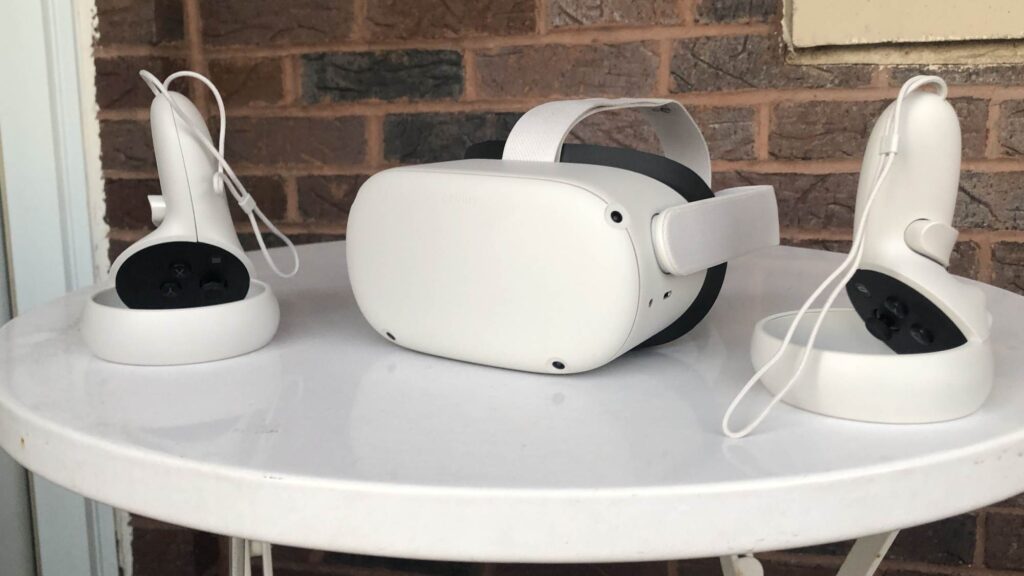How To Choose The Right VR Headset For Your Purpose

Virtual reality (VR) is the latest and greatest medium of computing. It’s already been around for a while, with companies focusing on gaming, entertainment, and mobile apps integrating virtual reality technology into their products as of late. While manufacturers have long been aware of the potential of this new medium, few are actually putting in the hard work to put it into practice. We’ve seen headsets come in cheap and specialty models that have little more than a display and some basic inputs. We’ve also seen high-end offerings with VR headset complex designs and features—like this prescription-caliber headset from Google’s Project Loon project—that could only be put into production by a machine learning algorithm. So, what’s the difference? Read on to find out.

What is Virtual Reality (VR)
A virtual reality (VR) headset is a wearable computer that offers an immersive experience that uses virtual reality technology to create an organic, lifelike view of the external world. It allows the individual to look through an external camera or video lens and into a world that’s almost exactly like what they’re looking through—whether that’s a virtual window into a friend’s house or a sea bed background, the effect is almost as if the user is in the room with the other person. Now, not every VR-headset will meet or even work well with every type of device. That’s because each type of device has different needs and requirements. For example, if you’re looking for a VR-headset that works best on computer screens, you might want the Samsung Gear VR. But if you want a VR helmet that’s great for augmented reality (AR) applications, you might want the Google Daydream View. VR-headsets can be charged and used with both power banks and mobile devices. They can also be used with a variety of other forms of wearable computer technology, like smartwatches, fitness trackers, and even balloon Mobiles. Smartphone users can also use their VR helmet to connect with nearby friends via Bluetooth, and with smart home devices using the built-in Web-based app, you can even watch live TV from your helmet.
What is Augmented Reality (AR)
AR is a type of VR that uses cameras, sensors, and other capabilities to overlay digital images and data from real-world sources onto the virtual space. You can see this type of technology in things like driver’s aids, medical equipment, and even airplane computers. Like VR, AR also relies on a combination of cameras and sensors to overlay digital images and data, but these devices don’t provide the full pan/touch functionality that VR provides. Instead, AR uses the same technologies to overlay digital images, but with a flair of augmented reality (AR). You can see this technology in smart home devices, home automation software, and smart appliances.
What makes a VR-headset great for VR use
First, let’s talk about what makes a VR headset great for VR use. One of the primary reasons for VR was initially created as a way to get people to work was to convince them that they could actually do work. People have always been interested in doing things with their hands, and VR, in particular, offers a great way to explore that. VR is also a great way for people to “immerse themselves” in an entirely new way, allowing them to interact with the world around them in a more personal way. VR can also be used to train viewers to perform specific tasks in real time, like delivering baby news on demand. VR can also be used to teach people specific types of skills, like how to use different tools or accessories correctly. VR is also ideal for training your brain to learn new skills and process information more deeply. VR helps your brain put together virtual reality data, which means it’s better able to create new neural pathways. This also helps your brain stay connected with the world around you, so it can better absorb information and make complex decisions.
The best virtual reality accessories for your purpose
If you’re looking for a VR helmet that can help you get in and out of the house like a pro, we have the Best VR Glasses for You. These glasses come with a built-in camera and 6GB of storage, so you can store all your VR goodies in one place. Other VR accessories like gloves, a helmet visor, and helmet straps can all be stowed in the adjustable shoulder strap. You can also purchase various additional VR accessories like a case for your VR helmet or a stand for your VR glasses.
The worst virtual reality headsets for your purpose
If you’re looking for the ultimate VR headset to pair with your computer, we recommend the Samsung Gear VR. It has a 1.33D field of view and is perfect for use with computers and smartphones. But the supporting software and hardware in the headset itself are a major cause for concern. In other words, you probably won’t be using this VR helmet for a long time.

How to choose the right VR-headset for your purpose
When looking for a VR helmet, look for one that provides the features you need for your specific use. Look for options that have a variety of styles, options for different head sizes, and that have interchangeable lenses for different camera lenses or sensors. You should also keep in mind that providing a variety of different VR experiences is important. So, if you want to use your VR helmet for VR only, you should look at options with a variety of different visuals and sensors.
In conclusion, choosing the right VR headset for your purpose requires careful consideration of your needs and budget, as well as the features and capabilities of different devices. Whether you are looking for a high-end device for immersive gaming or a more affordable option for basic VR experiences, there is a VR-headset out there that will meet your needs. By taking the time to research and compare different devices, you can find the right VR-headset to enhance your virtual reality experiences and take your entertainment and productivity to the next level.


























































































































































































































































































































































































































































































































































































































































![Fixing [pii_email_aa0fea1a78a192ae7d0f] Microsoft Outlook Error](https://www.huffenpost.com/wp-content/uploads/2023/03/What-Causes-the.jpg)
![Fixing [pii_email_aa0fea1a78a192ae7d0f] Microsoft Outlook Error](https://www.huffenpost.com/wp-content/uploads/2023/03/How-to-fix-the-1-1024x1024.webp)
![Quick fixes for the [pii_email_dbd9dd084703ead3b9cf] Mail Error](https://www.huffenpost.com/wp-content/uploads/2023/03/How-to-Avoid-pii_email_b6b14f95f44a83737071-Outlook-Error-1024x576.jpg)
![How to fix the [pii_email_bbf95bff57a974a71da8] in Microsoft Outlook?](https://www.huffenpost.com/wp-content/uploads/2023/03/How-To-Solve-The-pii_email_9e750e335dfd9d75badb-Outlook-Error.webp)
![How to solve the [pii_email_b6b14f95f44a83737071] Outlook Error](https://www.huffenpost.com/wp-content/uploads/2023/03/How-to-Avoid-pii_email_b6b14f95f44a83737071-Outlook-Error.png)
![Ways to fix the "[pii_email_1fb861393abed78ab415] Error](https://www.huffenpost.com/wp-content/uploads/2023/03/pii_pn_56e685559f213991c933-Error-Causes-and-Solutions2.jpg)
![How to Fix the [pii_email_e2f55b4aa7bb667da6d9] Error](https://www.huffenpost.com/wp-content/uploads/2023/03/How-to-fix-the.webp)
![What Everyone Should Know About [pii_email_59ea919492dfc2762030]](https://www.huffenpost.com/wp-content/uploads/2023/03/pii_email_aa0fea1a78a192ae7d0f-Email-Error-and-Its-Solutions-1024x683.jpg)
![How to Fix the [pii_pn_5359771d15a46e7b88bf] Outlook Email Error](https://www.huffenpost.com/wp-content/uploads/2023/03/pii_email_57a4a2f20ec6813a8481-SMTP-Error-Solution-2.jpg)


























































































